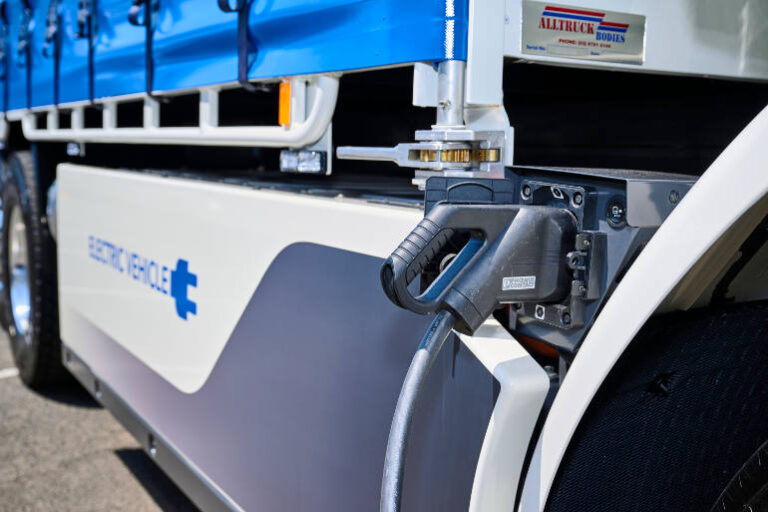Mark Hammond, the Chief Technical Officer of the Truck Industry Council, recently shared his insights on the state of play for zero and low-emission trucks in Australia during a webinar on transport decarbonisation. His discussion covered the current market status, challenges, and the future outlook for zero and low-emission vehicles, emphasising the necessity for government incentives to sustain growth in this critical sector.
Current market snapshot
The adoption of zero and low-emission trucks in Australia has been progressing steadily but remains in its infancy. In 2021, only four battery-electric trucks were sold out of a total of 41,000 trucks. However, this number has increased, with 161 battery-electric trucks sold by mid-2024. Hammond predicts that by the end of this year, between 300 to 350 zero-emission trucks will be on the roads, alongside approximately 200 hybrid trucks. While these figures represent a notable improvement, the growth rate has slowed compared to previous years, raising concerns about potential market saturation at such an early stage.
Hammond highlighted that a significant portion of these vehicles—over 80%—are being deployed in light truck and van segments within urban environments. This trend reflects the current limitations of zero and low-emission technology, which is well-suited to city and metro back-to-base operations but less so for regional or long-haul applications. Consequently, the overall impact on carbon dioxide (CO2) reductions has been modest, given that the diesel vehicles being displaced were not heavy fuel users to begin with.
Challenges and opportunities
One of the key issues Hammond addressed is the limited infrastructure for charging and the whole-of-life costs associated with zero and low-emission trucks. These challenges, combined with a slower uptake in 2024, suggest that without significant intervention, the momentum gained in recent years could stall. He underscored the importance of continued year-on-year growth in this sector to achieve meaningful CO2 reductions by 2030 and beyond.
The forecast for 2030 is cautiously optimistic. Under a business-as-usual scenario, Hammond estimates that about 7% of the truck market—around 3,000 vehicles—could be zero-emission by the end of the decade. This figure could rise to nearly 12,000 zero-emission trucks if more aggressive targets are met, driven by government incentives, vehicle registration compensation, and improved charging infrastructure. However, Hammond was clear that even with these efforts, zero-emission trucks would still represent a small fraction of the total market, primarily due to their limited operational scope and the high cost of new technologies.
Looking to the future
Hammond envisions a multi-faceted approach to decarbonisation, where zero and low-emission trucks play a significant but not solitary role. He pointed to freight productivity and low-carbon fuels as crucial components of a broader strategy to reduce emissions. For example, consolidating freight and shifting from semi-trailers to B-doubles on major highways could lead to substantial CO2 savings. Additionally, introducing a 10% renewable fuel blend across just 30% of the truck fleet could save up to 1.8 million tonnes of CO2 annually.
Despite the potential of zero-emission vehicles, Hammond was clear that they alone cannot meet Australia’s decarbonisation targets. The adoption of Euro 6 trucks, which are slightly more fuel-efficient than current diesel vehicles, will provide only a marginal reduction in emissions. Similarly, hydrogen-powered trucks, while promising in the long term, are not expected to make a significant impact before 2035 due to their high costs and nascent technology.
Hammond’s most compelling argument is for the immediate and robust incentivisation of zero-emission trucks. He believes that although the current impact on CO2 reductions is small, the benefits will compound over time. By 2040, the widespread adoption of these vehicles could lead to substantial emissions savings, but only if the groundwork is laid now. This includes addressing the current barriers to growth, such as infrastructure and cost, and ensuring that the market does not plateau at its current low levels.
Mark Hammond’s insights provide a realistic yet hopeful outlook on the future of zero and low-emission trucks in Australia. While challenges remain, particularly in terms of infrastructure and cost, the potential for these vehicles to contribute to decarbonisation is significant. However, as Hammond emphasises, this potential can only be realised through sustained growth, supported by government incentives and a broader strategy that includes freight productivity and low-carbon fuels. The road to decarbonisation may be long, but with the right measures in place, zero and low-emission trucks can play a pivotal role in Australia’s transport future.






